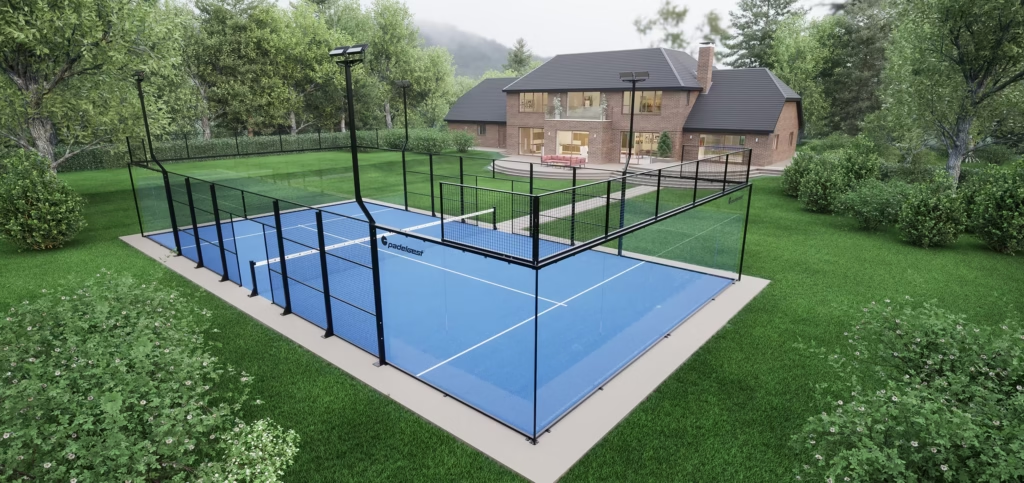Padel has exploded in popularity across the UK, and it’s no surprise that more people are asking if they can build a padel court at home. Imagine walking into your garden and stepping straight onto your own private court. But before construction begins, there’s an essential question:
Do you need planning permission for a padel court in your garden?
The short answer is: in most cases, yes.

Why Planning Permission Matters for Home Padel Courts
Unlike a small shed or garden feature, a padel court is a significant structure. Courts are 20m x 10m in size and usually enclosed by glass or mesh fencing 3–4 metres high. Add floodlights or a canopy cover, and the visual and environmental impact becomes even greater.
This is why local councils usually require a planning application. They’ll want to assess how the court might affect:
- Neighbouring privacy and views
- Local character and visual impact
- Noise and evening use (especially with lighting)
- Vehicle access and traffic, if the court isn’t purely private
Do All Home Padel Courts Need Planning Permission?
There are a few limited cases where you might not need formal consent:
- Temporary courts – if the court is not a permanent structure and can be removed easily.
- Large private estates – where the court falls under “permitted development rights” and is far from boundaries or neighbouring properties.
However, because of the enclosure height and fixed nature of the construction, most home padel courts in the UK do require planning approval.
What’s Involved in a Planning Application for a Padel Court?
A planning application for a private garden padel court is similar to one for a tennis court or sports facility. Typically, you’ll need to submit:
- A site plan showing the exact position of the court in relation to your house and boundaries.
- Elevation drawings of the court enclosure, canopy, or lighting columns.
- A planning statement confirming whether it’s for personal/private use or commercial use.
The planning authority will then consult with neighbours and other relevant departments before making a decision.
Expert Tips Before Building a Home Padel Court
- Check early with your council – don’t risk building without permission.
- Consider lighting carefully – this is one of the biggest concerns for neighbours.
- Think about access – will construction vehicles be able to reach the site without disruption?
- Get professional help – an architect or sports facility designer can prepare drawings and manage the planning process smoothly.
Frequently Asked Questions (FAQs)
How much space do I need for a home padel court?
The official padel court size is 20m x 10m, but you’ll need extra clearance around it for safety and access. Ideally, allow a footprint of around 25m x 15m.
Can I build a padel court in my garden without planning permission?
In most cases, no. The court’s size and enclosure height mean planning permission is required. Always check with your local authority first.
Can I add floodlights to a private padel court?
Yes, but lighting almost always requires additional permission due to concerns about light spill and neighbour disturbance. LED sports lighting with directional control can help reduce objections.
How much does it cost to build a home padel court?
Costs vary depending on ground conditions, fencing, and whether you add a canopy or lighting. As a rough guide, a single outdoor padel court can cost between £30,000 and £60,000, with indoor or covered courts costing more.
Is it possible to convert a tennis court into a padel court?
Yes, many homeowners with old tennis courts are converting them into padel courts. The existing flat surface is a huge advantage, but planning approval may still be needed for the enclosures and lighting.
Can a padel court increase property value?
For high-end properties, a well-designed private sports facility like a padel court can add appeal and value. Buyers see it as a unique lifestyle feature, similar to a tennis court or swimming pool.
Final Thoughts
If you’re planning a home padel court in the UK, the key takeaway is that planning permission will almost always be required. Every property is different, so the first step should be checking with your local authority or speaking to a professional designer.
With the right planning in place, your own private padel court could soon be more than just a dream — it could be the newest addition to your home.






